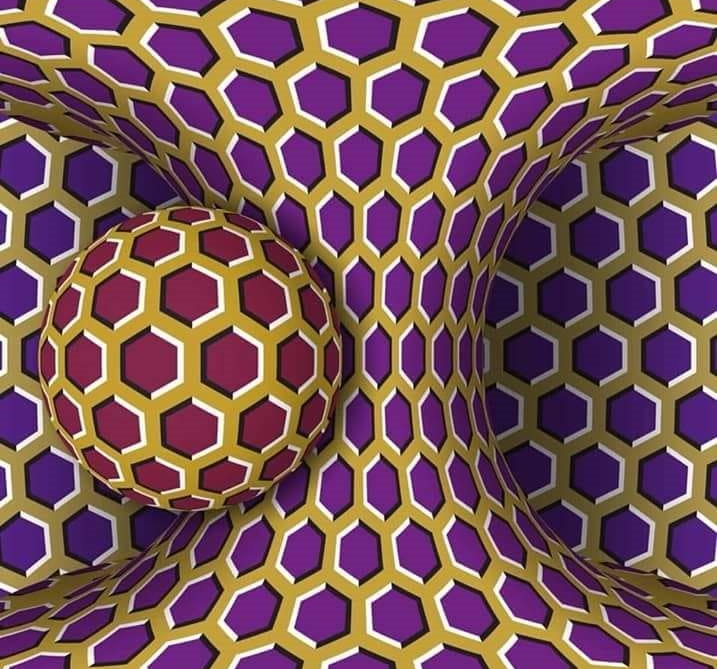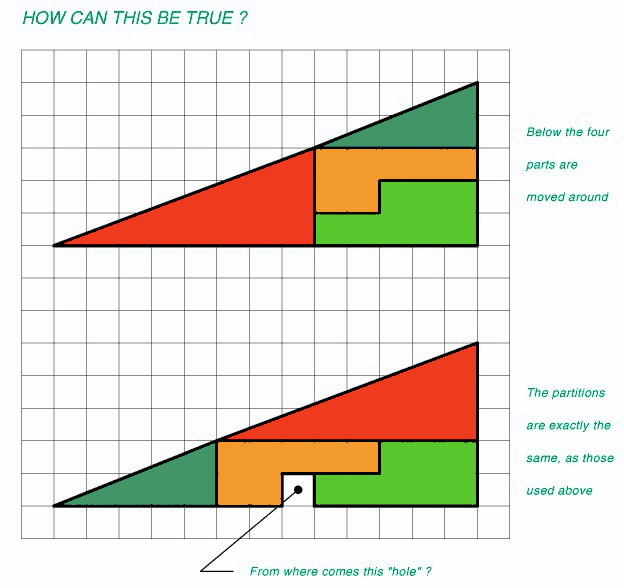| Subject |
Comments |
Views |
Author |
Date Written  |
|
This is not a gif nor a video
|
view preview
 A cognitive neuroscientist explains that the biological reason the image 'moves' is because the V5 (middle temporal visual area) part of your brain – devoted to motion processing – activates or fires due to the V4 part of your brain – devoted to colour and shape – becomes overstimulated. In fact, V4 neurons are saturated so much that the resting firing frequency of middle temporal neurons is interpreted as an actual sensory signal. The effect of this illusion strictly depends on several factors, namely on the receptive field sizes (the illusion changes as a function of viewing distance), V4 preference for spirals and spheres, and the middle temporal involvement in 3D and stereopsis. It is a very complex interaction, that rarely lead to suc ...
|
|
|
0 |
4011 |
duddy |
6 years ago |
|
Curry's paradox, explained
|
view preview
 At some point in your life, you've probably played this game of logic known as the missing square puzzle, or Curry's paradox - named after its inventor Paul Curry. This optical illusion is commonly used in mathematics classes to help students reason about geometrical figures, or rather to teach them to not reason using figures, but only using the textual description thereof and the axioms of geometry. It depicts two arrangements made of similar shapes in slightly different configurations. Each apparently forms a 13×5 right-angled triangle, but one has a 1×1 hole in it. As depicted in the animation, the illusion works because the diagonal of the two internal triangles is not a continuous slope from corner to corner. The overall connected shap ...
|
|
|
0 |
16510 |
duddy |
9 years ago |
|
This trick will make your brain see a black-and-white image in color
|
view preview
Watch the video above, the trick is nothing short of incredible! This is due to a mechanism called the opponent-process theory, which was developed in the 1870s. It is the idea of perceiving color in terms of paired opposites such as red with green, and yellow with blue. The possible scientific explanation for this theory is that bipolar cells are excited by one set of wavelengths and inhibited by other, which are in extend attached to the cone retinal receptors.
|
|
|
1 |
3816 |
duddy |
9 years ago |
|
|
0 |
31187 |
duddy |
10 years ago |
|
|
0 |
23831 |
duddy |
10 years ago |
|
Can you spot the plants in this photo?
|
view preview
Lithops are succulents that have evolved to avoid being eaten by animals by blending in with pebbles and stones. In botany, succulent plants, are plants having some parts that are more than normally thickened and fleshy, usually to retain water in arid climates or soil conditions. Succulent plants may store water in various structures, such as leaves and stems. ...
|
|
|
0 |
16224 |
duddy |
10 years ago |
|
|
0 |
1666 |
duddy |
10 years ago |
|
|
1 |
2290 |
duddy |
11 years ago |
|
Are the laws of physics the same everywhere on Earth?
|
view preview
The vortex is a spherical field of force, or a magnetic disturbance. The vortex is 165 feet in diameter and sits half way above ground and half below. The disturbance, or vortex causes unexplainable changes in perception, causing naturally occurring visual and perceptual phenomena that has been caught on film many times. Within the spherical distortion, people stand at an angle. The disturbance alters your relative gravity, causing you to stand at an angle of varying degrees. It is not possible for someone to stand vertical inside the vortex. It will also make someone who is walking away, seem taller, or shorter depending on where you stand. Balls roll uphill, brooms stand straight up and down on their own, and chairs appear to be held up b ...
|
|
|
1 |
6748 |
duddy |
11 years ago |
|
A fascinating real-life optical illusion
|
view preview
A fascinating optical illusion can be found at the southwestern tip of Mauritius Island. If seen from above, this part of the island seems to be melting into the ocean, forming a spectacular underwater waterfall. We owe this to a runoff of sand and silt deposits (the light-coloured portion of the water) and the downward pull of the receding waves.
|
|
|
0 |
6060 |
duddy |
11 years ago |
|